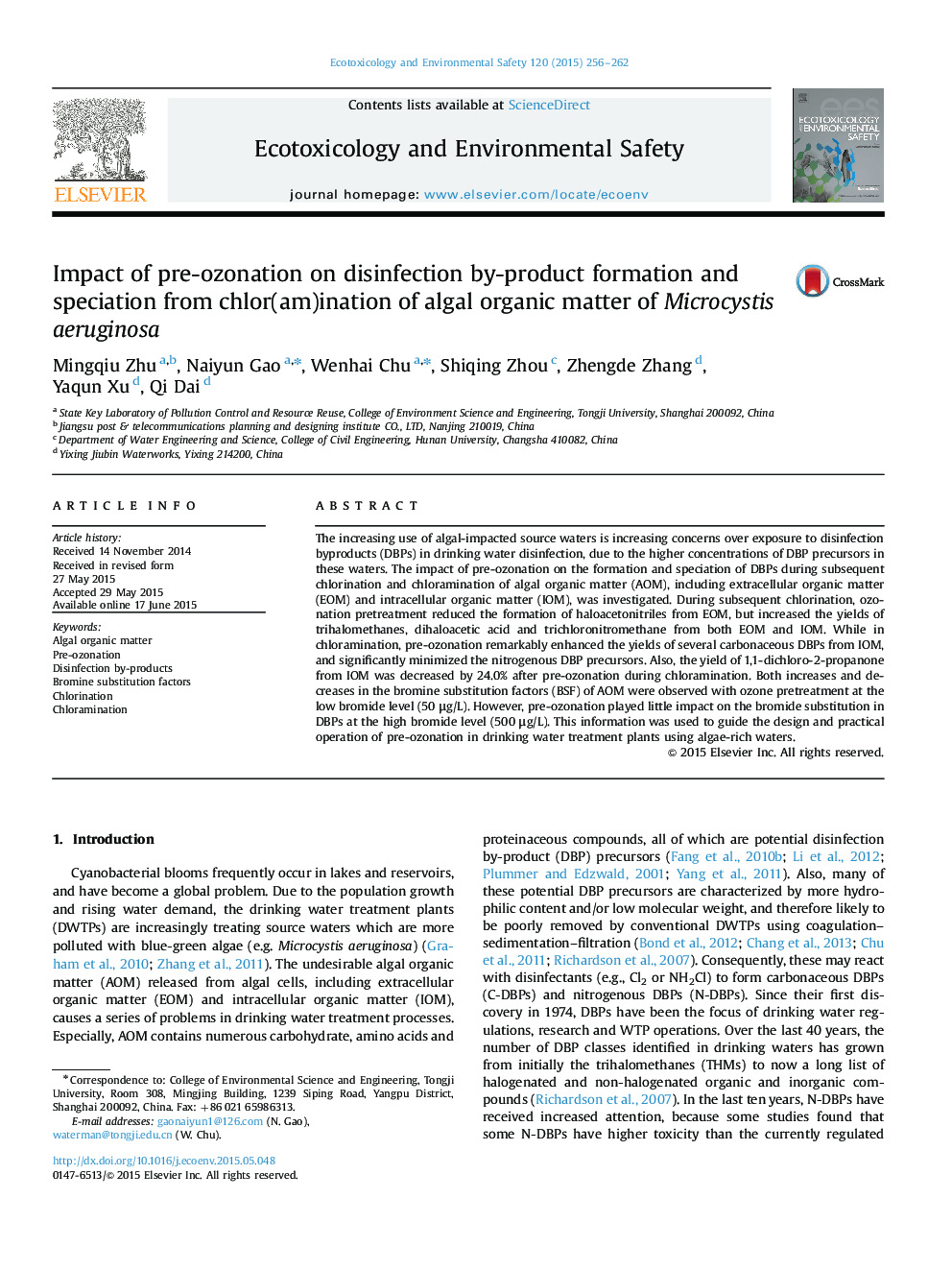| Article ID | Journal | Published Year | Pages | File Type |
|---|---|---|---|---|
| 4419395 | Ecotoxicology and Environmental Safety | 2015 | 7 Pages |
•Pre-ozonation significantly reduced the fluorescent intensities of AOM.•Pre-ozonation promoted THMs, HAAs and TCNM formation from IOM in chlor(am)ination.•Pre-ozonation reduced DCAN formation from EOM during chloramination.•Pre-ozonation had a less effect on DBP BSFs at a high bromide level.•Pre-ozonation caused a significant bromine substitution of THAAs in chloramination.
The increasing use of algal-impacted source waters is increasing concerns over exposure to disinfection byproducts (DBPs) in drinking water disinfection, due to the higher concentrations of DBP precursors in these waters. The impact of pre-ozonation on the formation and speciation of DBPs during subsequent chlorination and chloramination of algal organic matter (AOM), including extracellular organic matter (EOM) and intracellular organic matter (IOM), was investigated. During subsequent chlorination, ozonation pretreatment reduced the formation of haloacetonitriles from EOM, but increased the yields of trihalomethanes, dihaloacetic acid and trichloronitromethane from both EOM and IOM. While in chloramination, pre-ozonation remarkably enhanced the yields of several carbonaceous DBPs from IOM, and significantly minimized the nitrogenous DBP precursors. Also, the yield of 1,1-dichloro-2-propanone from IOM was decreased by 24.0% after pre-ozonation during chloramination. Both increases and decreases in the bromine substitution factors (BSF) of AOM were observed with ozone pretreatment at the low bromide level (50 μg/L). However, pre-ozonation played little impact on the bromide substitution in DBPs at the high bromide level (500 μg/L). This information was used to guide the design and practical operation of pre-ozonation in drinking water treatment plants using algae-rich waters.
Graphical abstractFigure optionsDownload full-size imageDownload as PowerPoint slide
